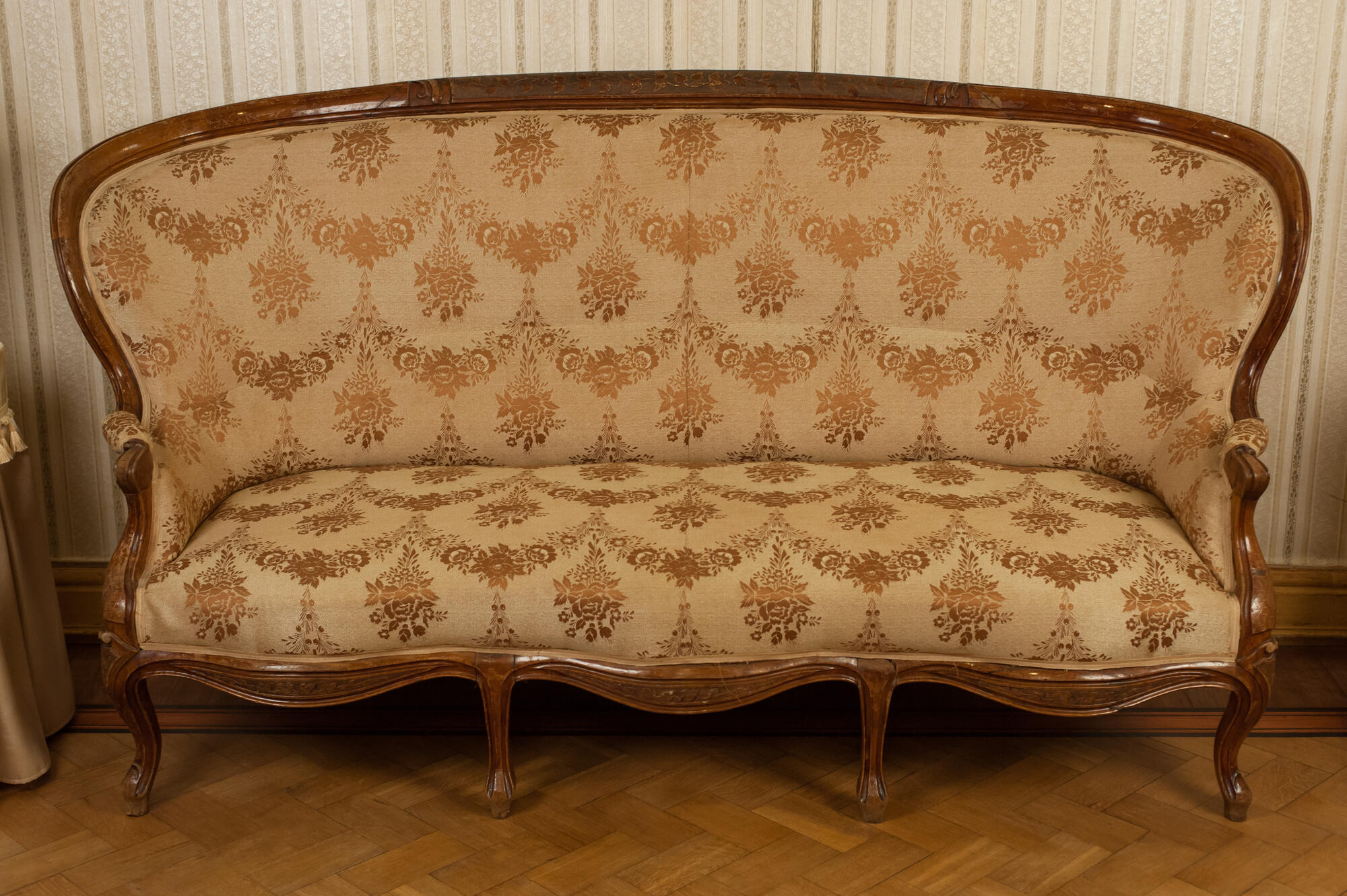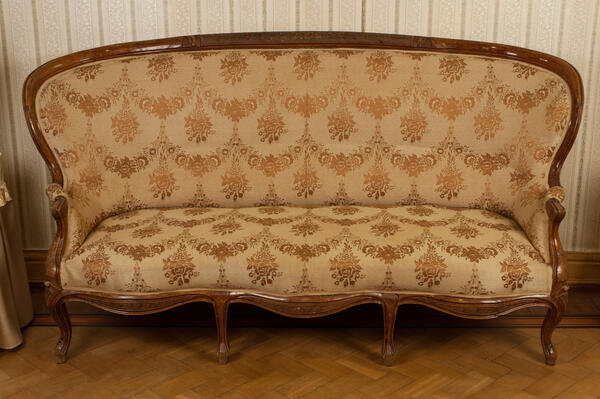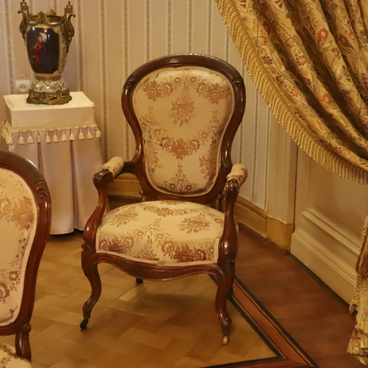Furniture items produced by Gambs workshop, commonly known in Russia simply as Gambs furniture, were famed for their beauty as well as for their impeccable quality. Mentions of the Gambs furniture are frequently found in contemporary Russian literature: in ‘Fathers and Sons’ by Ivan Turgenev, in ‘The Precipice’ by Ivan Goncharov, and even in an unfinished ‘We spent the evening at the cottage…’ by Alexander Pushkin.
Heinrich Gambs, the founder of Gambs workshop, first arrived in Saint Petersburg from Germany along with his teacher, a famous cabinet-maker David Roentgen. The two of them were accompanying a large batch of furniture commissioned by Empress Catherine the Great. Gambs was so fascinated by the beauty of the Russian imperial capital and by the prospects of the Russian market that he moved to Saint Petersburg and started working there in 1790. Having partnered up with an Austrian merchant Jonathan Ott, Gambs opened a large furniture workshop in the capital.
Top quality and design of the furniture made Gambs workshop one of the most fashionable brands in Saint Petersburg. The company kept operating for over sixty years, first ran by Gambs himself and later on by his sons. D. Ivanov, a specialist in the history of Gambs workshop, stated that ‘it was the time when courtiers would choose a work of Gambs workshop for a holiday gift rather than gold or diamonds.’
The museum collection holds a living room set consisting of eleven furniture items produced by Gambs workshop in Saint Petersburg. The set was originally part of Empress Consort Maria Alexandrovna’s living room in the old Livadia palace. The set was apparently transferred to Massandra museum in as early as the 1930s – it can be seen in the museum photos of that time. After the end of WW2, Massandra museum was abolished and the furniture moved again to the State Dacha (a dacha is a Russian summer country house). In 1956 the museum was re-established, so the furniture set was exhibited in the Chinz Room of the Vorontsov Palace, and then nine items from the set were moved to the Royal Bedroom in Alexander III’s palace to represent the furniture of the Imperial family.
Canapé is the French term used for an antique piece of furniture similar to the couch, with upholstered padded seats, back, and armrests that can seat two or more people. Canapés come in different shapes and were very popular in Europe since the 17th century. This canapé has an elongated arched back.
Heinrich Gambs, the founder of Gambs workshop, first arrived in Saint Petersburg from Germany along with his teacher, a famous cabinet-maker David Roentgen. The two of them were accompanying a large batch of furniture commissioned by Empress Catherine the Great. Gambs was so fascinated by the beauty of the Russian imperial capital and by the prospects of the Russian market that he moved to Saint Petersburg and started working there in 1790. Having partnered up with an Austrian merchant Jonathan Ott, Gambs opened a large furniture workshop in the capital.
Top quality and design of the furniture made Gambs workshop one of the most fashionable brands in Saint Petersburg. The company kept operating for over sixty years, first ran by Gambs himself and later on by his sons. D. Ivanov, a specialist in the history of Gambs workshop, stated that ‘it was the time when courtiers would choose a work of Gambs workshop for a holiday gift rather than gold or diamonds.’
The museum collection holds a living room set consisting of eleven furniture items produced by Gambs workshop in Saint Petersburg. The set was originally part of Empress Consort Maria Alexandrovna’s living room in the old Livadia palace. The set was apparently transferred to Massandra museum in as early as the 1930s – it can be seen in the museum photos of that time. After the end of WW2, Massandra museum was abolished and the furniture moved again to the State Dacha (a dacha is a Russian summer country house). In 1956 the museum was re-established, so the furniture set was exhibited in the Chinz Room of the Vorontsov Palace, and then nine items from the set were moved to the Royal Bedroom in Alexander III’s palace to represent the furniture of the Imperial family.
Canapé is the French term used for an antique piece of furniture similar to the couch, with upholstered padded seats, back, and armrests that can seat two or more people. Canapés come in different shapes and were very popular in Europe since the 17th century. This canapé has an elongated arched back.



